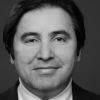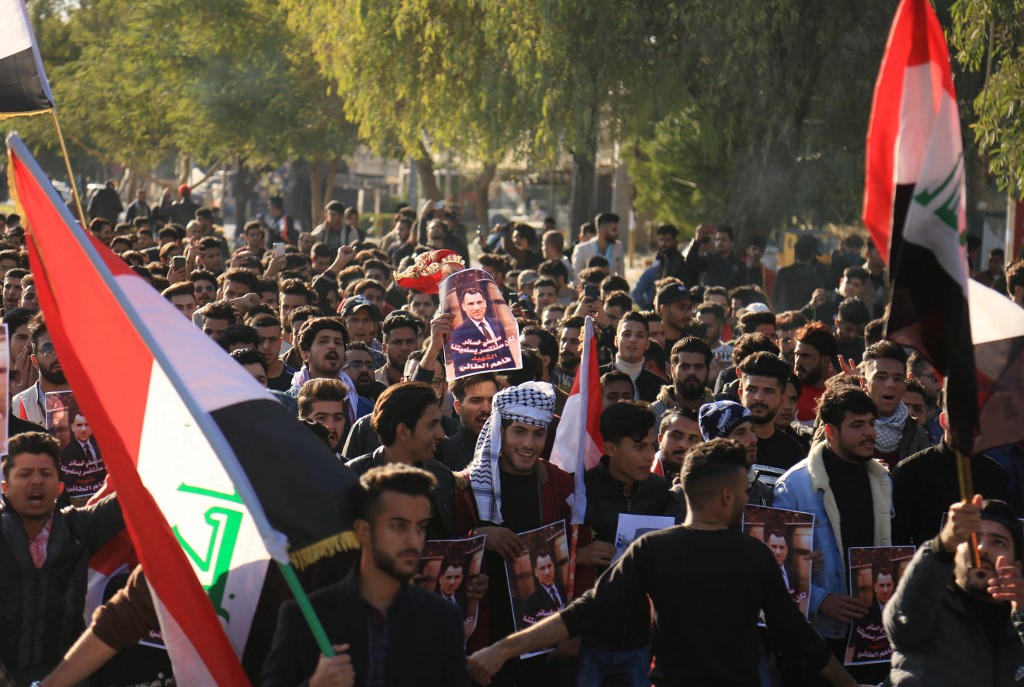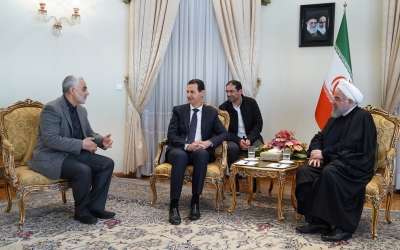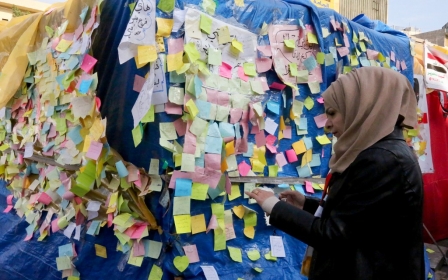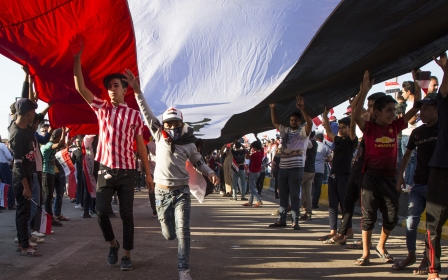US-Iran tensions are set to widen Iraq's sectarian divide

Qassem Soleimani’s assassination will likely be one of the defining moments in the modern history of Middle East politics.
Just as his life dramatically shaped the course of regional events, his death will probably prove even more consequential - and no country will feel the repercussions more than Iraq.
Iraq has become not only the battleground for a fierce competition between Iran and the United States, but also a victim of it. This has been the case since the 2003 US invasion of the country. In the wake of Soleimani’s death, things can only get worse.
Baghdad's regional role
Statements by US President Donald Trump that hinted at deescalation after the Iranian missile attacks on military bases hosting US troops in Iraq may momentarily reduce tensions between Tehran and Washington, but they are unlikely to reverse the deepening crisis in Iraq.
Looking at the rhetoric of Iranian and pro-Iranian regional actors, it is clear that Iraq is at the centre of Tehran’s longer-term aim to downsize the US regional presence.
Beyond regional destabilisation, Iraq will pay a significant cost for the latest escalation. In recent years, there has been a glimmer of hope in Iraq’s politics, including its gradual emergence as an actor in regional affairs, rather than a mere theatre for rivalries.
Iraq's compromised and fragmented sovereignty has been a key factor preventing its emergence as a major regional actor
To a limited extent, Baghdad has illustrated a will to play a role in reducing tensions between both Iran and Saudi Arabia, and Iran and the US. Iraq’s caretaker prime minister, Adel Abdul Mahdi, claimed that Soleimani was in Iraq at the time of his death to discuss de-escalating tension with Saudi Arabia.
This is a dubious claim, the veracity of which is yet to be confirmed - but one should be conscious of the limits to Iraq’s search for a regional role. The country’s compromised and fragmented sovereignty has been a key factor preventing its emergence as a major regional actor. In spite of this, Baghdad’s search for a regional role in recent years has been a step in the right direction.
Unfortunately, the recent incident will only further undermine Iraqi sovereignty, deepen its status as a theatre for power rivalries (primarily, but not exclusively, between the US and Iran), and diminish its prospects of playing any meaningful regional role.
Waves of protest
Secondly, the waves of protest that have shaken the Iraqi political establishment have forced the issue of reform onto the country’s political agenda, at least discursively. These protests have been increasingly anti-systemic, rather than merely anti-governmental. One of the shared demands of the various groups of protesters has been their opposition to Iran’s meddling in Iraqi affairs.
Given that the social base of these protests was effectively formed by the Shia community, their demands were illustrative of the gradual decoupling between the Shia public sphere across the region and Iran. The recent incident, however, has shifted international focus away from these protests, undermining them.
Despite this temporary setback, the grievances, demands and aspirations that gave birth to these protests remain in place - and if anything, they have been further aggravated.
Thirdly, the rising tensions between the US and Iran is further deepening the sectarian framework of Iraqi politics, which was shaken by the protests. While these protests have mostly been an intra-Shia affair, with little Kurdish or Sunni participation, the demands are post-sectarian, putting pressure on the sectarian framework of Iraqi politics.
But as the recent vote in the Iraqi parliament on the US military presence illustrated - the non-binding resolution to expel US troops passed almost exclusively due to Shia votes - the sectarian framework of Iraqi politics is likely to be strengthened by recent incidents.
In addition, while Abdul Mahdi’s government made modest progress in reducing the political gap between Iraq’s constituent communities - Shia, Sunnis and Kurds, including on the question of governing the contested, oil-rich city of Kirkuk - this gap is set to widen, as the future of the US military presence in Iraq becomes a new political fault line.
Future US presence
While Shia factions push for a US withdrawal, the Kurds and Sunnis - fearful of Shia domination of the central government and the spectre of a larger Iranian influence in Iraqi politics - are worried about the prospect of a complete US withdrawal.
Such new, issue-based realignments in Iraqi politics are an irony of history. Post-invasion Iraq was premised on Shia and Kurdish cooperation, while Sunnis felt marginalised and left out.
As the future presence of US forces increasingly becomes the central item of debate, the gap between the Kurds and Sunnis is likely to decrease, while the gap between the Kurds and Shia widens. But overall, the political space between Iraq’s three constituting communities will only continue to widen.
With this, the era of grey-zone politics that previously facilitated the ability of pro-Iranian and pro-US forces to operate next to each other in Iraq is almost over. All actors will be forced to pick a side.
Fearing the consequences, this is a choice that the Kurds and Sunnis would prefer to avoid making publicly and clearly. The Kurds in particular - learning from costly lessons prior to, and in the aftermath of, the 2017 independence referendum and their abandonment by the US - want to tread a fine line.
Same old victims
While Kurdish leaders have engaged US officials through phone conversations and meetings, the president of Iraq’s Kurdish region recently sent a warmly worded letter of condolence to Iranian Supreme Leader Ayatollah Ali Khamenei over the killing of Soleimani. Likewise, former Kurdish president Massoud Barzani described the situation as “alarming” and warned that Iraq, and the wider region, were on the verge of explosion, calling for wisdom to prevail.
Without the US presence, Iraqi Kurds, and arguably Sunni Arabs as well, will feel as though they are increasingly at the mercy of Iran
But as this debate over the presence of US troops in Iraq gains steam, this position will become difficult to sustain. Without the US presence, Iraqi Kurds, and arguably Sunni Arabs as well, will feel as though they are increasingly at the mercy of Iran and a central government dominated by Iran-aligned Shia factions.
Soleimani’s life was hardly a cause of celebration for Iraqis, particularly Kurds and Sunnis. Yet, at a time when the post-Soleimani Middle East is beginning to take shape, the first victims again appear to be the same old victims: Iraqis.
The views expressed in this article belong to the author and do not necessarily reflect the editorial policy of Middle East Eye.
Middle East Eye propose une couverture et une analyse indépendantes et incomparables du Moyen-Orient, de l’Afrique du Nord et d’autres régions du monde. Pour en savoir plus sur la reprise de ce contenu et les frais qui s’appliquent, veuillez remplir ce formulaire [en anglais]. Pour en savoir plus sur MEE, cliquez ici [en anglais].


